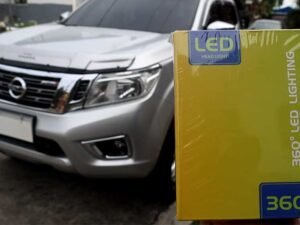Portable traffic lights are essential tools used for controlling traffic in situations where permanent traffic signals may not be available or appropriate. These portable traffic lights are often deployed for road construction, special events, detours, or emergency situations.
While playing a crucial role in maintaining traffic flow and safety, it is important to use portable traffic lights correctly to avoid accidents and ensure smooth operations. In this article, you will learn and understand the eleven valuable tips on how to safely use the portable traffic lights.
1. Choose the Right Location
When placing portable traffic lights, one of the first steps is to choose the right location. The position should be easily visible to drivers from a distance. Placing the portable traffic lights in areas where the road curves, or there is a blind spot, can create confusion for motorists. Also, ensure that the lights are placed on a straight portion of the road with enough visibility so that drivers can react in time.
2. Proper Installation is Key
Take note that the installation of portable traffic lights is vital for effectiveness and safety. Make sure the lights are securely mounted on sturdy poles or stands, ensuring no knock over by wind or passing vehicles. Improper installation can cause the lights to malfunction or fall, creating serious hazards. Furthermore, it is also essential to ensure the light settings are correctly configured for the situation.
3. Regular Maintenance Checks
Keep in mind that portable traffic lights, like any other electronic devices, require regular maintenance to remain functional. Before deployment, perform a thorough inspection to ensure proper operation. Check the bulbs and wiring for any damage or wear. Clean the lenses regularly to remove dirt and grime that can obscure the light’s visibility. Any malfunctioning lights should be repaired or replaced immediately.
4. Use Proper Signage for Clarity
Investing in portable traffic lights should be accompanied by clear signage to inform drivers about the presence of signals and the purpose of the signals. Signs that indicate “traffic signal ahead” or “temporary traffic control” can alert drivers to upcoming changes in traffic flow. Additionally, it’s important to use reflective materials for signs to ensure visibility at night or in low-light conditions.
5. Ensure the Lights are Visible at Night
Since portable traffic lights are often used in construction zones or on detour routes that may operate at night, it is crucial that visibility is maintained in all conditions. Ensure the lights are bright enough to be seen from a distance and do not blend into the surroundings. Plus, placing some additional lights or reflective markers around the area can further improve visibility for nighttime drivers.
6. Set Timers Appropriately
Don’t forget that portable traffic lights often have timers controlling the length of time each light remains red, green, or yellow. Also, it is very important to set timers appropriately to manage traffic flow and prevent congestion. Properly timed intervals make sure that the drivers have enough time to react and pass safely through intersections or work zones.
On top of that, timers should allow enough time for drivers to pass through the intersection or construction zone safely. However, setting timers too short can cause bottlenecks and accidents, while timers set too long can lead to unnecessary delays. So, balanced timing ensures a steady flow of traffic, reducing both congestion and frustration for drivers.
7. Utilize Flashing Signals for Warning
In some cases, portable traffic lights may be set to flashing mode rather than solid red, green, or yellow. Always bear in mind that lashing signals are typically used to warn drivers about temporary road hazards, construction zones, or other situations where extra caution is needed. When using flashing lights, ensure synchronization and proper positioning to provide clear, unmistakable guidance to drivers.
8. Communicate with Drivers Effectively
Having communication with drivers is a critical part of using portable traffic lights safely. Make sure drivers are informed about changes in traffic patterns and any roadwork or detours encountered. In addition to traffic lights and signage, you should think about using some flaggers or attendants to provide direct guidance in high-traffic areas or situations where more clarity is needed.
9. Plan for Emergencies
Despite taking all the necessary precautions, there may be situations where an emergency arises. Take note, it is important to have a contingency plan in place for such events. For example, if the lights malfunction or if a vehicle crashes near the lights, there should be a procedure for handling the situation. Always have backup equipment and trained personnel available to address these emergencies.
10. Review and Update Traffic Control Plans
As roads and construction zones change, so should the traffic control plans that use portable traffic lights. Review and update the placement of the lights to adapt to new conditions. If the construction site moves or the road layout changes, adjust the placement of the lights and signage to ensure that drivers always have up-to-date guidance. This way, it ensures that the traffic can continue flowing smoothly.
11. Provide Compliance with Local Traffic Laws
Before deploying portable traffic lights, it’s important to ensure that their use complies with local traffic regulations. Some areas may have specific requirements for the placement, usage, or maintenance of temporary traffic signals. What’s more is that you should familiarize yourself with the local laws and work with local authorities to ensure your traffic control plan is legal and effective.
Smart Signals, Safer Roads!
Investing in portable traffic lights is an invaluable tool in maintaining safety and order on the roads, especially in construction zones, detours, and other temporary traffic management situations. However, portable traffic lights effectiveness depends on proper installation, maintenance, and use.
By following these eleven tips, you can ensure that portable traffic lights are used effectively. Always prioritize visibility, communication, and compliance with local laws to minimize risks and keep traffic moving smoothly. Proper care and attention to detail can prevent accidents and make the roadways safe.










